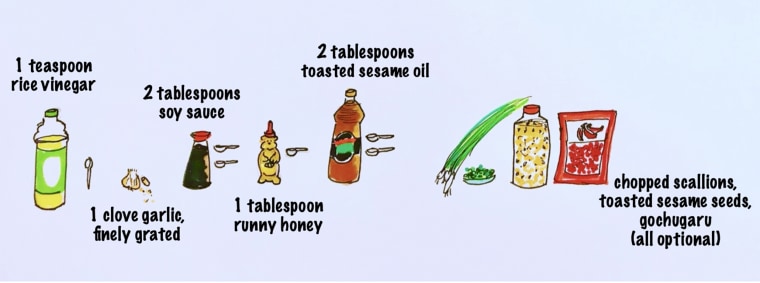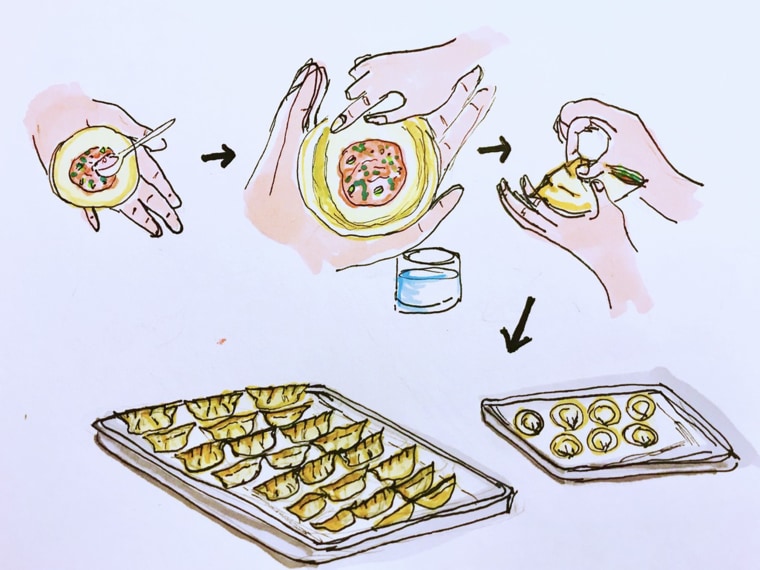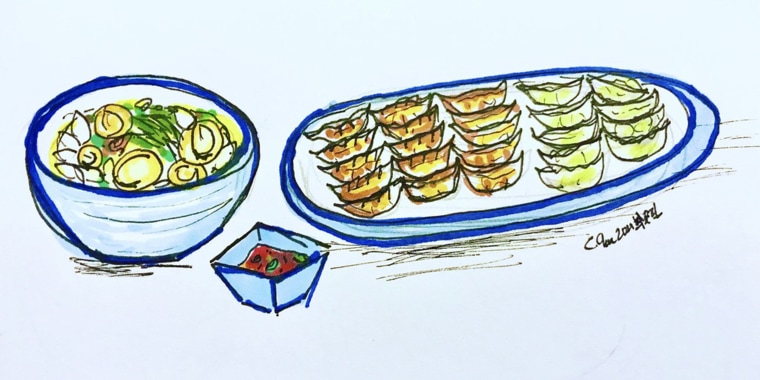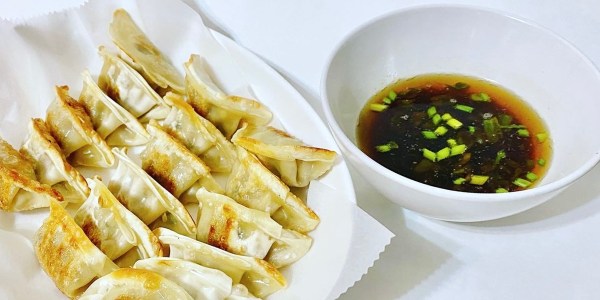Though there are many fantastic frozen dumplings options on the market, there is absolutely nothing that compares to making them yourself. But it's a lot of work — there is a reason folks throw dumpling-making parties. You go down the assembly line to put many of them together: filling, pinching them shut and repeating until the filling has been used up or the wrappers are all gone. But the payoff is well worth the effort.
For Korean New Year’s Day, it is tradition to serve mandu a few ways. My favorite way to prepare them is the steam-frying method, but they are also commonly enjoyed in the celebratory soup, Dduk Mandu Guk (Rice Cake and Dumpling Soup). Whichever way you choose to enjoy mandu, it’ll certainly be a delicious start to the new year.
This recipe uses store-bought dumpling wrappers, but you can feel free to make homemade ones and adjust the cooking time as needed.
If you’d like to freeze any of them, make sure they freeze first before storing on a parchment-lined baking sheet, with space between all dumplings so they don’t stick together. Once frozen, they can be stored for up to about 2 to 3 months.
If you would prefer to keep them without meat, it can work wonderfully with a blend of different alternatives: Tofu, glass noodles, zucchini and shiitake mushrooms work great, too!
Mandu ingredients

Dipping sauce ingredients

How to make the mandu
1. In a large bowl, combine the ground pork, chopped cabbage, garlic, soy sauce, sesame oil, grated ginger, scallions, salt and pepper. Mix well until thoroughly combined.

2. Set up the following stations: 1) wrappers, 2) filling, 3) a cup of water, 4) a large parchment or plastic wrap-covered dish or parchment-covered baking sheet.
3. Hold one of the dumpling wrappers flat on the palm of your hand, and carefully spoon 1-tablespoon of the filling in the center of each (don't overcrowd it!). With your opposite index finger (or however convenient for you), gently dip your finger in the cup of water and wet the edges of your dumpling wrapper and carefully fold your dumpling in half to make a half-moon shape. Pinch it shut around the edges to seal it well. Set aside on your plate and continue assembling, making dumplings until all your filling is gone (you can pleat the edges of the too, if you have the time or if you decide to, you can wet the corners of the dumpling and pull them together to form a circular dumpling, traditionally seen in dduk mandu guk).

4. In a large, non-stick pan, heat a thin layer of cooking oil in a large skillet over medium-high heat for about 3 minutes. Then, one by one, carefully transfer each dumpling to the hot oil, laying them out throughout the pan, close but without touching one another (be careful because hot oil can pop up from the dumpling liquid). Allow the dumplings to cook for about 2 to 3 minutes. Then, take a 1/2 cup of water and carefully (and closely) pour it into the hot pan (the pan is going to sizzle, step back and be ready with the lid!) and cover your pan with a fitted lid to allow the dumplings to steam for about 5 more minutes.

5. Lift the lid off the pan, turn off the heat. With the assistance of a spatula, transfer your dumplings to a plate lined with a paper towel and let them cool.

2 other ways to cook the dumplings
Pan-steaming: Pour 1/2 cup of water into a non-stick pan and let it come to a gentle boil (it will happen quickly!). Carefully lay the dumplings throughout the pan, close but not touching one another. Cover the pan with a fitted lid and allow the dumplings to steam for 8 to 10 minutes.

In dduk mandu guk broth: Since the mandu is always put in at the end of cooking, put about 10 to 12 dumplings in the broth to cook for about 7 minutes or until they become translucent and float to the top (soup and dumplings to be served together).
How to make the dipping sauce
In a small bowl, combine the vinegar, soy sauce, honey, minced garlic, sesame oil, your choice of scallions or toasted sesame seeds and gochugaru if you'd like some spiciness. Mix well.


